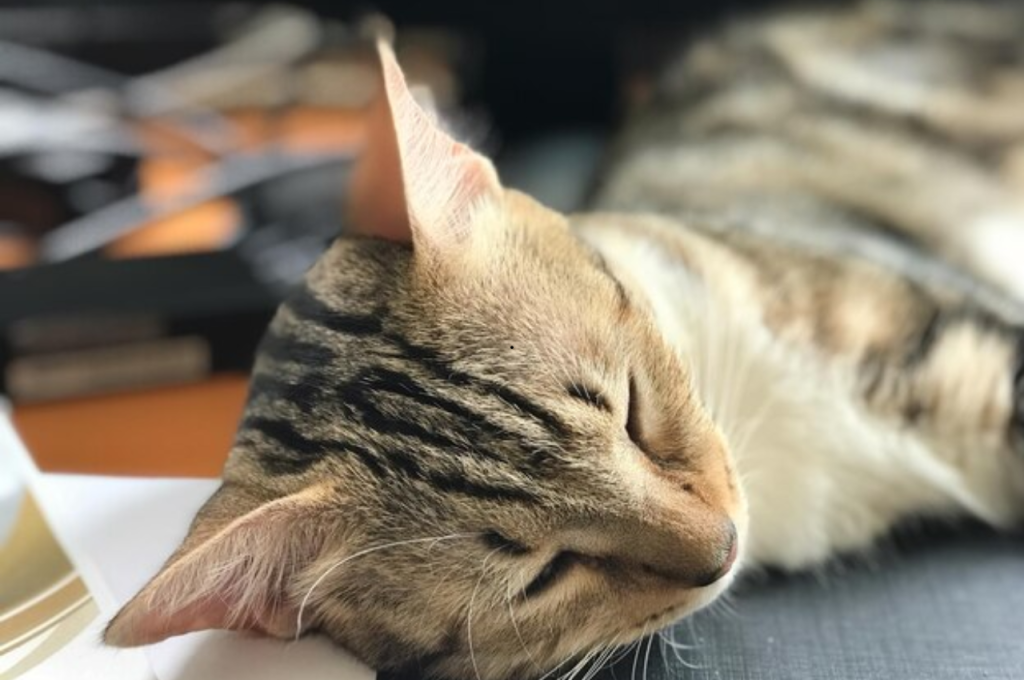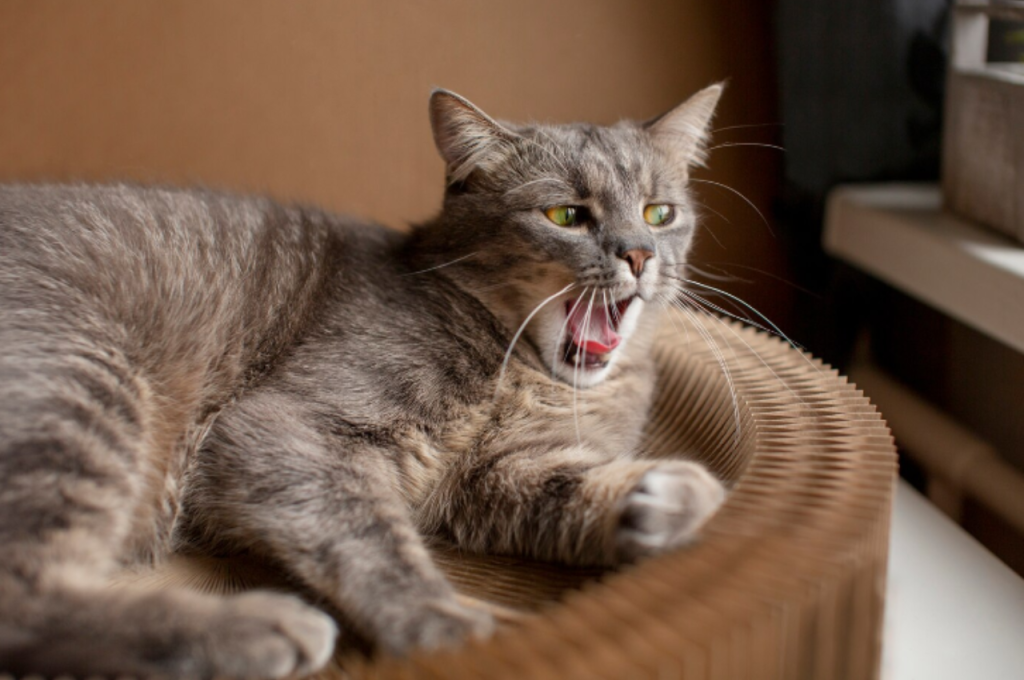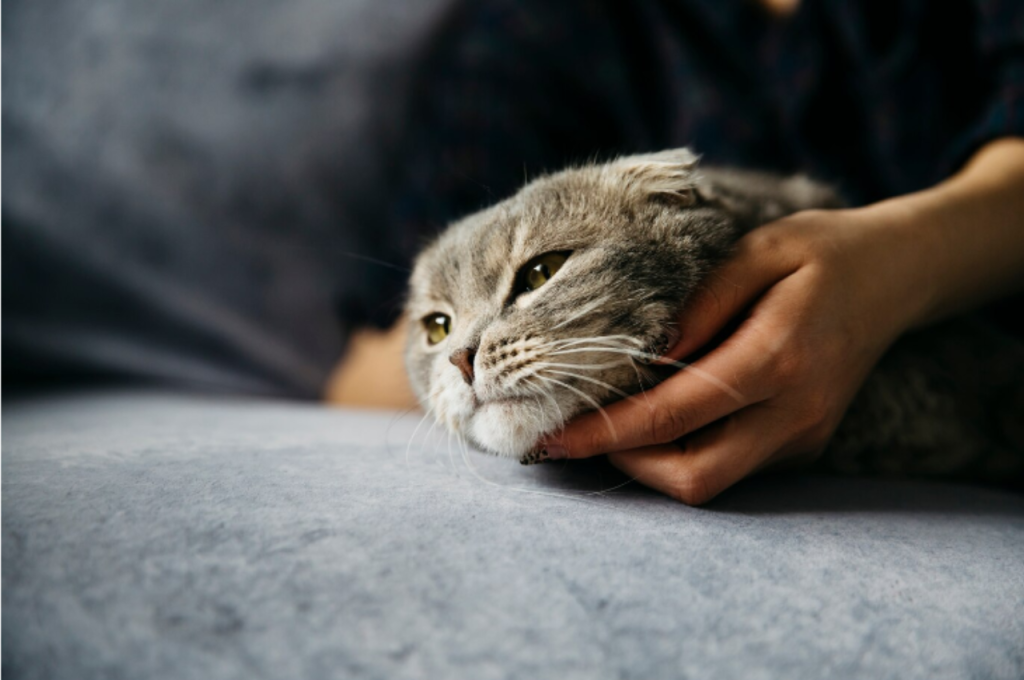If your cat is stressed, it may show signs like excessive grooming, hiding, or changes in appetite. Other signs include aggression, urine marking, or excessive vocalization.
Stress can also cause health issues, so it’s important to address it promptly. Cats are sensitive animals, and changes in their environment, routine, or interactions can trigger stress. Understanding the signs of stress in cats is crucial for their well-being. By recognizing these signs early on, you can take steps to alleviate your cat’s stress and ensure they lead a happy and healthy life.
In this blog post, we’ll explore the common indicators of stress in cats and provide tips on how to help your feline friend feel more at ease in their environment.
Introduction to Feline Stress
Feline stress can manifest in various ways, making it important to recognize the signs. Look out for changes in behavior, excessive grooming, aggression, loss of appetite, and hiding as potential indicators that your cat may be experiencing stress. Understanding these signs can help you provide the necessary care and support for your furry friend.

Differences From Human Stress
Introduction to Feline Stress Cats experiences stress, just like humans. Identifying signs early can prevent issues. Cats show stress through behavior changes. Understanding feline stress is crucial.
Why It’s Crucial to Recognize
Recognizing stress helps address it. Early intervention is key to cat well-being. Signs of feline stress differ from humans. Behavior is the primary indicator.
Differences From Human Stress
Cat stress differs from human stress as it often stems from environmental changes, unfamiliar situations, or disruptions in routine. Cats may exhibit stress through hiding, excessive grooming, or aggression, while humans might show stress through emotional and physical symptoms.
Sign 1: Changes in Behavior
Hiding More Than Usual
Cats may hide more than usual when stressed. They seek solitude to cope with the stress they are experiencing. If your feline friend is hiding in unusual places or for extended periods, it could be a sign of stress.
Aggression or Fearfulness
Stressed cats may exhibit aggressive or fearful behavior. This can include hissing, growling, scratching, or biting. They may also cower or avoid interaction altogether. Uncharacteristic aggression or fearfulness may indicate that your cat is feeling overwhelmed.
Sign 2: Alterations in Vocalization
Notice any changes in your cat’s vocalization? It could be a sign of stress. Pay attention to any alterations in their meows, hisses, or purrs as it could indicate their emotional state.
Increased meowing or silence Cats experiencing stress may either meow excessively or become unusually quiet. Changes in tone or volume Stressed cats may exhibit changes in the tone or volume of their meows. Their meows can become more high-pitched or softer than usual. This alteration in vocalization can indicate underlying stress or discomfort.
Sign 3: Litter Box Issues
One sign of stress in cats is litter box issues, such as avoiding the litter box or urinating outside of it. If your cat shows these behaviors, it may be a sign of stress that needs to be addressed promptly.
Avoiding The Litter Box
One of the most noticeable signs that your cat may be stressed is when they start avoiding their litter box. Cats are generally clean animals and will instinctively use a litter box to relieve themselves. However, when they are under stress, they may exhibit unusual behaviors related to their bathroom habits.
If you notice that your cat is consistently avoiding the litter box, it could be an indication that they are experiencing stress. This could be due to various factors such as changes in their environment, health issues, or anxiety.
Unusual Bathroom Habits
When a cat is stressed, they may display unusual bathroom habits that differ from their normal routine. These behaviors can include:
- Urinating outside the litter box: Your cat may start urinating on carpets, furniture, or other inappropriate areas instead of using their litter box.
- Defecating outside the litter box: Similarly, your cat may start defecating outside the litter box, which can be a sign of stress.
- Overgrooming: In some cases, a stressed cat may excessively groom their genital area, leading to hair loss and skin irritation.
- Changes in litter box behavior: Your cat may spend more or less time in the litter box, show signs of discomfort while using it, or dig excessively before and after elimination.
It’s important to note that while litter box issues can be a sign of stress, they can also be indicative of underlying medical conditions. If you notice any changes in your cat’s bathroom habits, it’s crucial to consult with a veterinarian to rule out any health issues.
Understanding and addressing the underlying cause of your cat’s stress is essential for their well-being. By providing a calm and comfortable environment, seeking veterinary advice, and implementing appropriate behavioral modifications, you can help alleviate your cat’s stress and restore their litter box habits to normal.
Sign 4: Grooming Changes
If you notice changes in your cat’s grooming habits, it could be a sign of stress. Excessive grooming or lack of grooming may indicate that your cat is feeling anxious or overwhelmed. Keep an eye on any grooming changes as they may signal your cat’s stress levels.

Cats are known for their meticulous grooming habits, but when a cat is stressed, you may notice significant changes in their grooming behavior. Paying attention to these grooming changes can provide valuable insights into your cat’s emotional well-being.
Over-grooming or Neglect
One common grooming change seen in stressed cats is over-grooming or neglecting their grooming routine altogether. Some cats may excessively lick or chew on certain areas of their bodies, leading to hair loss or bald patches. This behavior is often a result of anxiety or frustration. On the other hand, some cats may neglect grooming altogether, leading to a scruffy or unkempt appearance. These grooming changes can be indications that your cat is experiencing stress or discomfort. It’s important to observe any changes in your cat’s grooming routine and take note of any excessive grooming or lack thereof.
Bald Patches or Sores
If you notice bald patches or sores on your cat’s skin, it could be a sign of stress-related grooming changes. Cats may chew or scratch their skin due to anxiety or irritation, leading to hair loss and the development of open sores.
These sores can be painful for your cat and may require veterinary attention. When you spot bald patches or sores on your cat’s skin, it’s crucial to address the underlying cause of their stress. Identifying and resolving the source of stress can help alleviate their grooming changes and promote their overall well-being. In conclusion, monitoring your cat’s grooming habits is an essential part of understanding their emotional state. Changes in grooming behavior, such as over-grooming or neglect, as well as the presence of bald patches or sores, can indicate that your cat is experiencing stress.
By recognizing these signs and taking appropriate measures to reduce their stress, you can help your cat lead a happier and healthier life.
Sign 5: Eating and Sleeping Patterns
One sign of stress in cats is changes in eating and sleeping habits. If you notice your cat eating less or more than usual, or having trouble sleeping, it could indicate stress. Be attentive to these patterns to help alleviate your cat’s stress.
Cats are creatures of habit, which makes their eating and sleeping patterns a great indicator of their overall well-being. As a responsible cat owner, it’s essential to monitor your feline friend’s behavior and observe any changes in their daily routine. Here are two essential signs that can help you identify if your cat is stressed or not.
Loss of Appetite or Overeating
Cats are known for their love of food, and a sudden change in their eating habits is a red flag that something might be wrong. Stress can cause your cat to lose their appetite or eat more than usual. If you notice your cat is not eating or is overeating, it’s essential to take them to the vet to rule out any underlying health issues. You can also try to switch up their food, giving them different options to see if they prefer something else.
Sleeping More or Less
Cats sleep a lot, but if you notice your feline friend sleeping more or less than usual, it could be a sign of stress. A stressed cat might sleep more to escape from their environment, or they might sleep less due to anxiety or fear. Ensure your cat has a comfortable place to sleep, away from any loud noises or disruptions. If you notice any significant changes in your cat’s sleeping patterns, it’s best to consult with a vet to determine if there’s an underlying issue.
By paying attention to your cat’s eating and sleeping patterns, you can identify any signs of stress or discomfort and take the necessary steps to ensure their well-being. Remember, a healthy cat is a happy cat, so always prioritize their health and happiness.
Understanding Your Cat’s Stress Triggers
New Pets or People
Introducing new pets or people can be a major stress trigger for your cat. Cats are territorial animals and may feel threatened by the presence of a new pet or unfamiliar person in their environment. This can lead to behaviors such as hiding, aggression, or excessive grooming.
Changes in Environment
Cats are creatures of habit and thrive on routine. Any sudden changes in their environment, such as moving to a new house, rearranging furniture, or loud noises from construction work, can cause stress. Cats may exhibit signs of stress through excessive meowing, hiding, or refusing to eat.
How to Help Your Stressed Cat
Creating a Safe Space
If you notice your cat exhibiting signs of stress, it’s essential to create a safe and secure environment for them. This includes providing a quiet area where your cat can retreat to if they feel overwhelmed. A comfortable bed or blanket, along with a few of their favorite toys, can help to create a sense of security. Additionally, consider using pheromone diffusers or calming sprays to help create a soothing atmosphere.
Routine and Familiarity
Cats thrive on routine and familiarity, so maintaining a consistent schedule can help alleviate their stress. This includes feeding, playtime, and interaction with your cat. Establishing regular feeding times and play sessions can provide a sense of predictability and stability for your feline friend. Familiarity with their environment is also crucial, so try to minimize any major changes in their living space.
When to Consult a Veterinarian
Notice any changes in your cat’s behavior like excessive grooming or hiding, as these could indicate stress. If symptoms persist, consult a veterinarian for a thorough assessment and tailored treatment plan. Your cat’s well-being is a top priority, so don’t hesitate to seek professional help when needed.

Identifying severe stress
Cats can experience stress just like humans, but unlike us, they can’t communicate their feelings. As a cat owner, it’s essential to recognize the signs of stress in your feline friend. Mild stress can be managed at home, but severe stress may require medical attention from a veterinarian. If you notice any of the following signs, it’s time to take your cat to the vet.
Medical solutions and advice
Some cats may exhibit severe stress symptoms that require medical solutions and advice. A veterinarian can help diagnose the underlying cause of stress and recommend treatments. Here are some medical solutions and advice that a veterinarian may suggest:
- Medication: In some cases, medication may be prescribed to help your cat cope with stress.
- Environmental changes: A vet may recommend changes to your cat’s environment, such as providing more hiding places or reducing noise levels.
- Behavior modification: A vet may suggest behavior modification techniques to help your cat cope with stress.
- Health check: A vet may perform a health check to rule out any underlying medical conditions that may be causing stress.
If you notice any signs of severe stress in your cat, it’s crucial to consult a veterinarian as soon as possible. Don’t delay seeking medical attention if you’re concerned about your pet’s well-being. Remember that stress can be managed with the right treatment and care.
Conclusion
After reading this article, you should now have a better understanding of how to tell if your cat is stressed. Remember, cats can experience stress just like humans and it’s important to recognize the signs early on to help them feel more relaxed and comfortable.
By keeping a close eye on your cat’s behavior and providing a calm and comfortable environment, you can help them lead a happy and stress-free life. So, take care of your feline friends and keep them healthy and happy.
